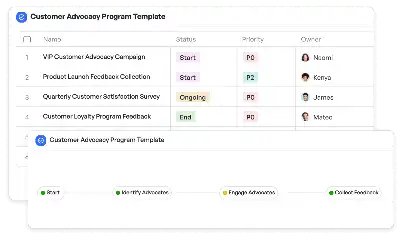Hardware Validation Criteria Matrix
Achieve project success with the Hardware Validation Criteria Matrix today!

What is Hardware Validation Criteria Matrix?
The Hardware Validation Criteria Matrix is a structured framework designed to ensure the reliability, compatibility, and performance of hardware components in various systems. It serves as a critical tool for engineers and project managers to systematically evaluate hardware against predefined criteria, such as electrical performance, thermal stability, and mechanical durability. In industries like automotive, consumer electronics, and aerospace, where hardware reliability is paramount, this matrix becomes indispensable. For instance, validating the hardware of an automotive ECU (Electronic Control Unit) requires rigorous testing to meet safety and performance standards. By using the Hardware Validation Criteria Matrix, teams can identify potential issues early in the development cycle, reducing costly redesigns and ensuring compliance with industry regulations.
Try this template now
Who is this Hardware Validation Criteria Matrix Template for?
This template is tailored for professionals involved in hardware development and validation processes. Typical users include hardware engineers, quality assurance specialists, and project managers in industries such as electronics manufacturing, automotive, and aerospace. For example, a hardware engineer working on a new IoT device can use this matrix to validate components like sensors and microcontrollers. Similarly, quality assurance teams in consumer electronics can leverage the matrix to ensure products meet customer expectations and regulatory standards. The matrix is also beneficial for cross-functional teams collaborating on complex hardware projects, providing a unified framework for validation and decision-making.

Try this template now
Why use this Hardware Validation Criteria Matrix?
The Hardware Validation Criteria Matrix addresses specific challenges in hardware validation, such as ensuring compatibility between components, meeting stringent performance benchmarks, and adhering to industry standards. For instance, in the development of gaming systems, validating GPU performance against thermal and electrical criteria is crucial to avoid overheating and ensure seamless gameplay. The matrix provides a systematic approach to identify and mitigate risks, such as component failure or incompatibility, before they impact the final product. Additionally, it facilitates communication among stakeholders by providing a clear and comprehensive validation framework, ensuring that all team members are aligned on project goals and requirements.

Try this template now
Get Started with the Hardware Validation Criteria Matrix
Follow these simple steps to get started with Meegle templates:
1. Click 'Get this Free Template Now' to sign up for Meegle.
2. After signing up, you will be redirected to the Hardware Validation Criteria Matrix. Click 'Use this Template' to create a version of this template in your workspace.
3. Customize the workflow and fields of the template to suit your specific needs.
4. Start using the template and experience the full potential of Meegle!
Try this template now
Free forever for teams up to 20!
The world’s #1 visualized project management tool
Powered by the next gen visual workflow engine




